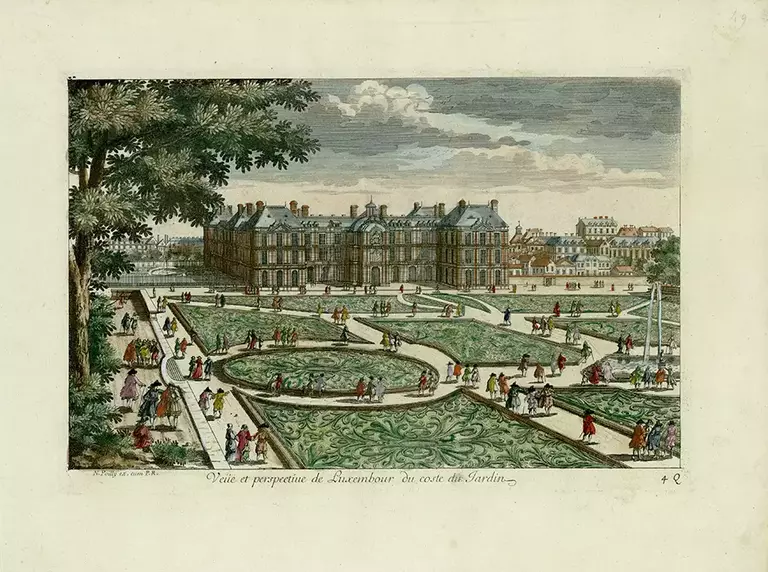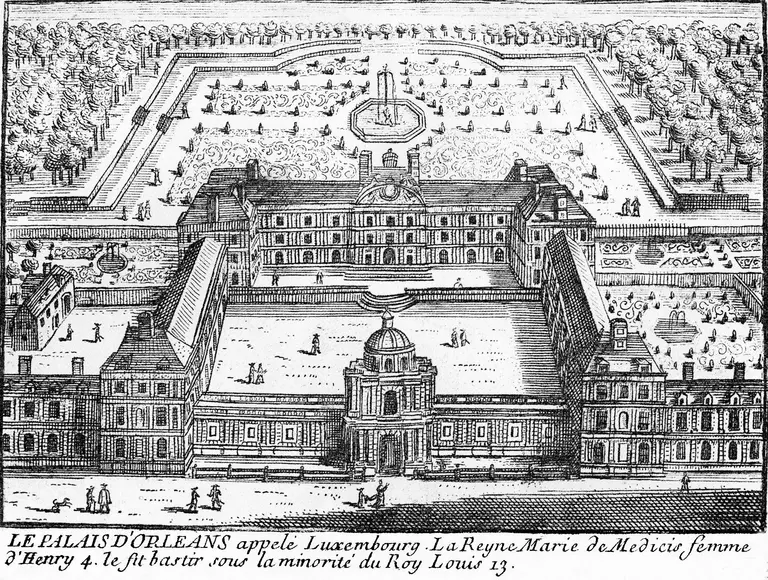The Medicis have given two queens to France, both builders: Catherine, the spouse of Henry II, who started the construction of the Tuileries, and Marie, widow of Henry IV, who built a palace that never bore her name, but will forever bear her imprint on it.
Maria di Medici had never been happy at the Louvre, still semi-medieval, where the fickle king, did not hesitate to receive his mistresses.
The death of Henry IV, assassinated in 1610, left the way open for Marie's project. When she became regent, she was able to give special attention to the construction of an imposing modern residence that would be reminiscent of the Palazzo Pitti and the Boboli Gardens in Florence, where she grew up. The site was quickly chosen: close to the residence Faubourg Saint-Germain, close to the residence of Léonora Galigai and Concini, a special mansion was built covering eight hectares - the property of François de Luxembourg, Duc de Piney. Neighbouring houses and lands were also acquired, although not the environs of the Carthusians, which the disciples of St Bruno refused to part with. The development of the 25-hectare park, which was to serve as a jewel-case for the palace, began immediately.
The construction of the palace was to prove less easy: the architect, Salomon de Brosse, began the work in 1615. Only 16 years later was it to be completed. Was he faithfully inspired by his Italian model?
The two palaces, it is true, bear more than a passing resemblance to each - to begin with, the Tuscan-style bossage decoration, but the plan, in which the precincts of a fortress can still be made out, is of French inspiration. Already a precursor of Vaux-le-Vicomte and Versailles in rather more than outline, the Palace of Luxembourg affords a transition between the Renaissance and the Classical period.
The "Medici Palace", majestic in its proportions, presents to its visitors a décor of exceptional opulence: The regent saw to that: in the salons and apartments on the first floor, reached by a staircase situated in the middle of the main building, Philippe de Champaigne and Jean Mosnier composed its sumptuous decoration.


To decorate the great French-style gallery in the West wing, Maria di Medici ordered 24 canvases from Rubens, today in the Louvre, retracing the great political themes of her regency.
Installed in the palace in 1625, Maria di Medici thought it judicious to offer the "Hôtel du Luxembourg" as a gift to Armand de Richelieu, her "creature". Misfortune overtook her: it was at the Luxembourg that the saga of the "Journée des Dupes" (1630) unfolded.
Summoned by his mother to get rid of his minister or herself, Louis XIII, a Cornelian type of king, kept his minister. Forced into exile, Maria di Medici left her palace for ever, in February (1631). On her death in 1642, her younger son, Gaston d'Orléans, leader of the Fronde, inherited the Luxembourg which, from that time until the Revolution, was to bear the name, the "palais d'Orléans" [Palace of Orleans].
In 1750, the Director of the King's Buildings installed in the wing the first public art-gallery in France, in which French and foreign canvases of the royal collections are shown. The Count of Provence and future Louis XVIII, who was living in Petit Luxembourg, had this gallery closed in 1780: leaving to emigrate, he fled from the palace in June 1791.